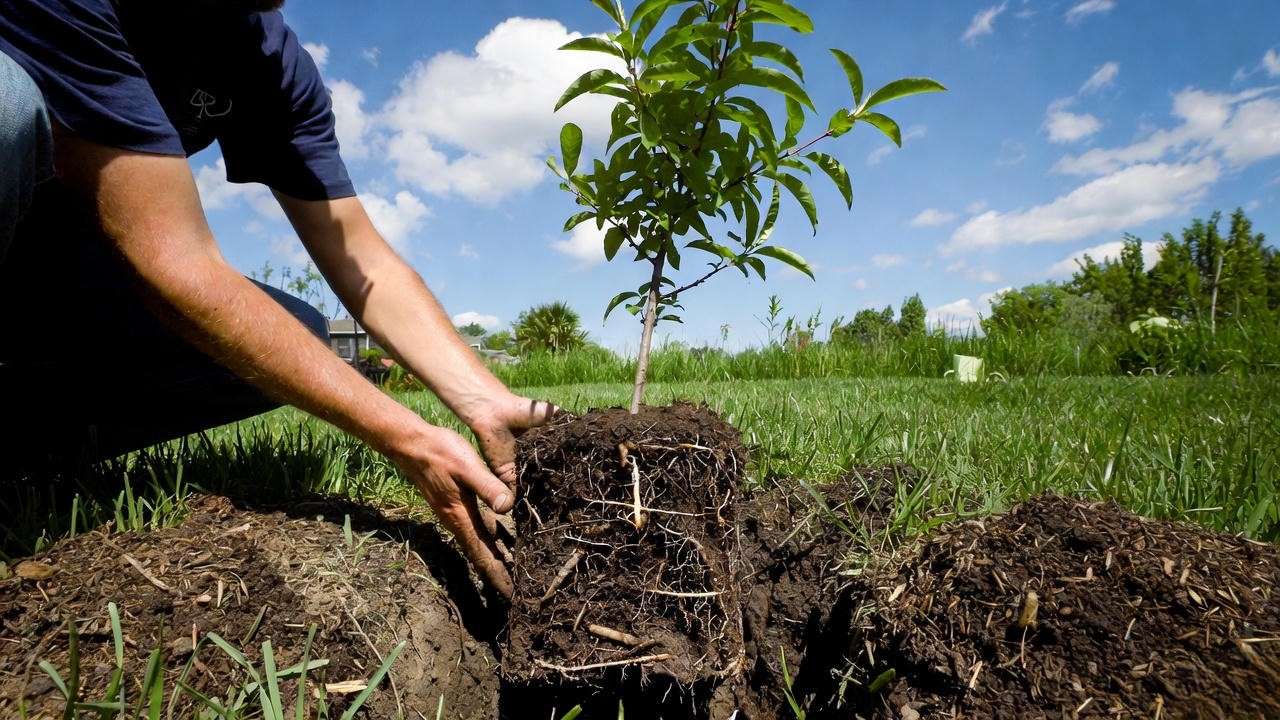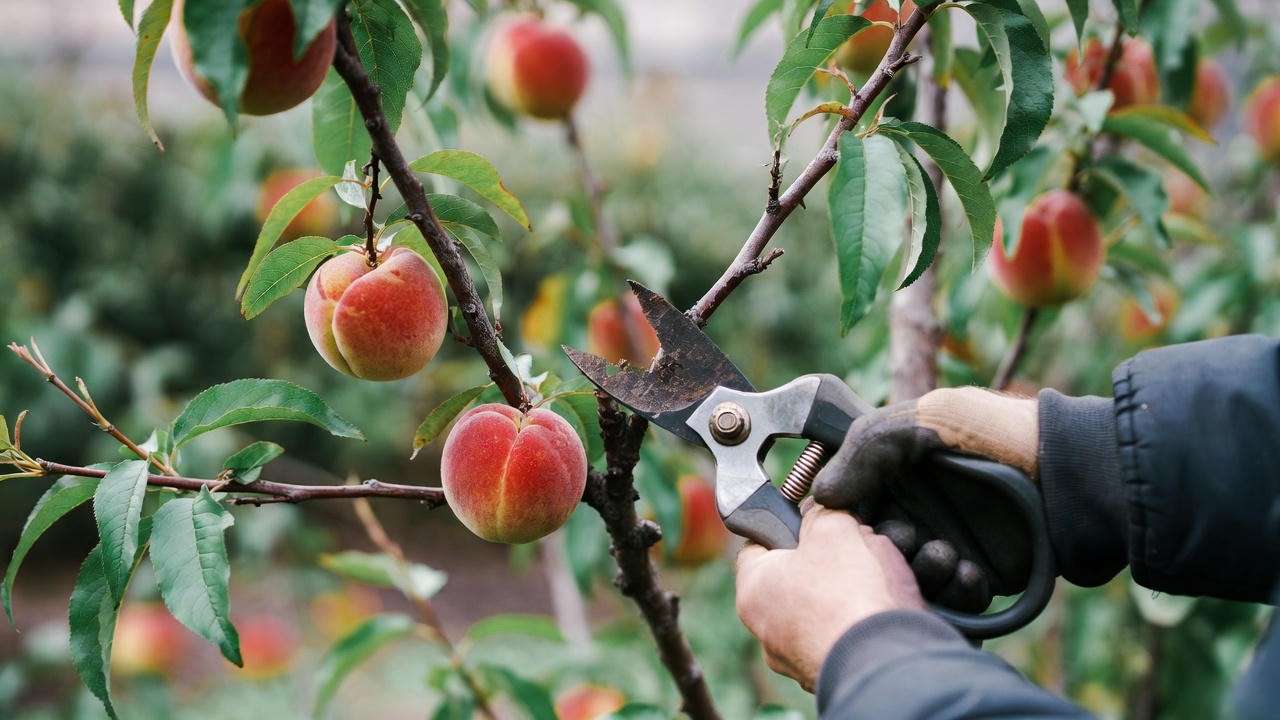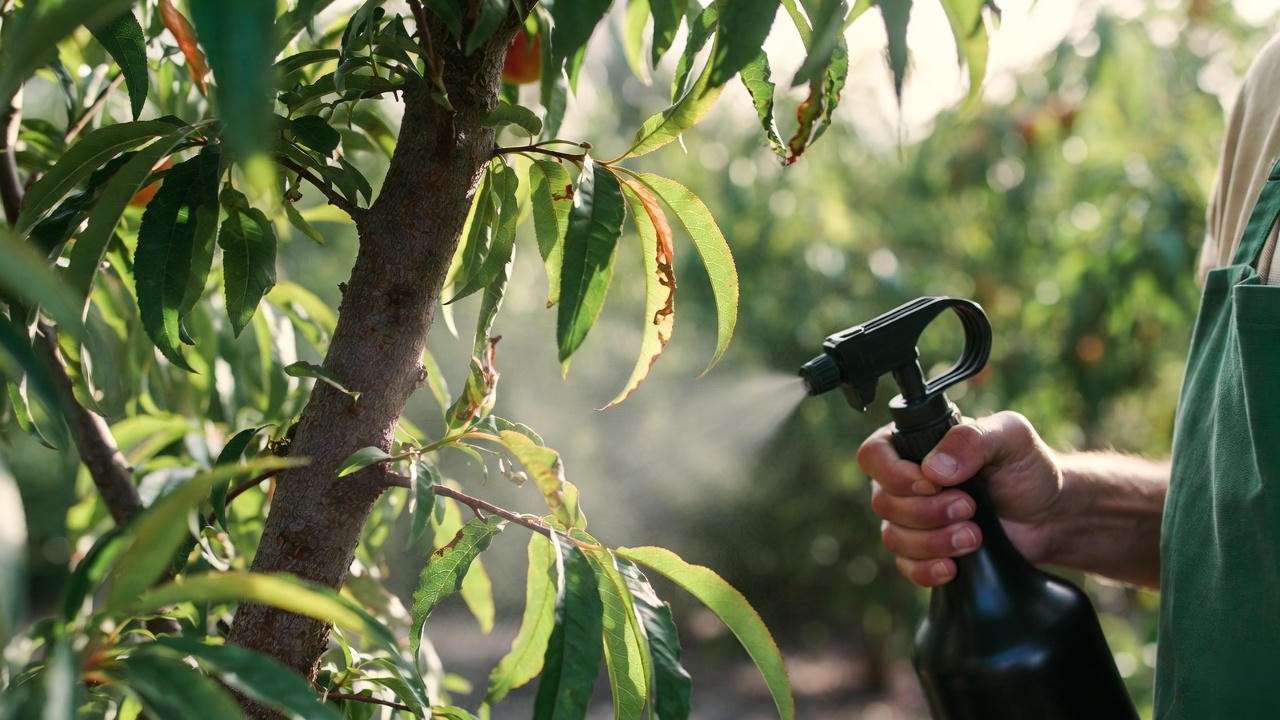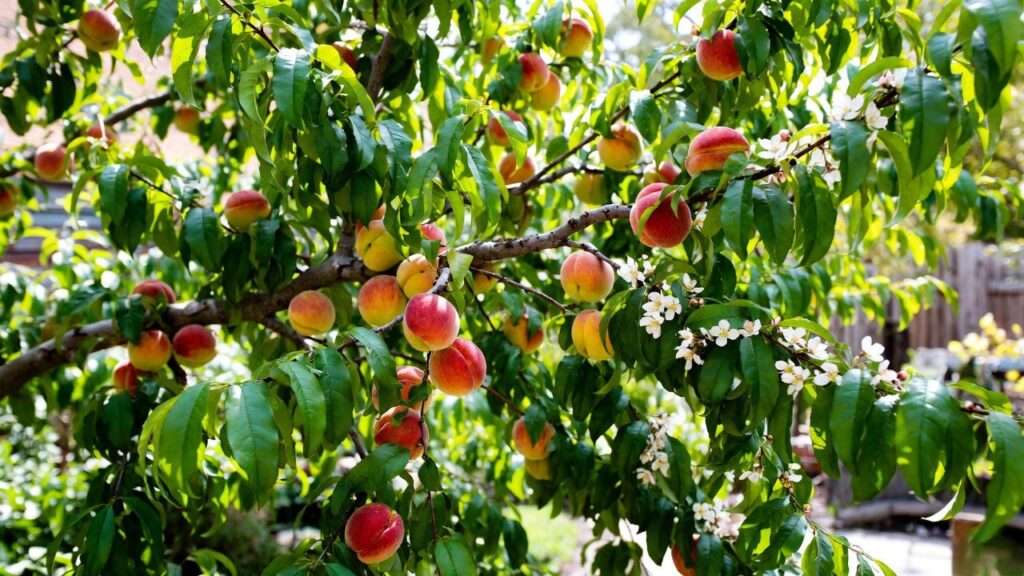Picture this: it’s a warm summer afternoon, and you’re sinking your teeth into a juicy, sweet Red Haven peach, plucked straight from your own backyard tree. The flavor bursts with a perfect balance of sweetness and tang, and the pride of growing it yourself makes it taste even better! The Red Haven peach tree is a gardener’s dream, renowned for its delicious fruit and manageable size, but unlocking its full potential requires expert care and a bit of know-how. Whether you’re a novice gardener or a seasoned grower, this comprehensive guide will walk you through every step of planting, nurturing, and harvesting a thriving Red Haven peach tree. With insights drawn from over a decade of horticultural experience and research from top agricultural extensions, you’ll learn the secrets to growing bountiful, juicy peaches right at home. Ready to transform your backyard into a peach paradise? Let’s dive in! 🌞
Why Choose a Red Haven Peach Tree? 🍑
The Red Haven peach tree is a standout choice for home gardeners, combining exceptional fruit quality with practical growth habits. Its popularity stems from its reliability, adaptability, and the sheer joy of harvesting your own peaches. Let’s explore why this variety deserves a spot in your garden.
Characteristics of the Red Haven Peach Tree
The Red Haven is an early-ripening, freestone peach variety, meaning the pit separates easily from the flesh, making it perfect for eating fresh, canning, or baking. Its medium-sized fruits boast vibrant red and yellow skin with a sweet, slightly tangy flavor that’s a favorite among peach lovers. Typically growing to 12–15 feet tall, this compact tree fits well in small yards or even large containers (for dwarf varieties). It’s self-pollinating, so you don’t need a second tree for fruit production, though cross-pollination can boost yields. According to Dr. Robert Crassweller, a fruit tree expert at Penn State Extension, “Red Haven is a benchmark variety for its consistent quality and adaptability across diverse climates.” 🌸
Benefits for Home Gardeners
Why grow a Red Haven? For starters, a mature tree can produce 50–100 pounds of peaches annually, providing ample fruit for your family and friends. It thrives in USDA hardiness zones 5–8, tolerating winters as cold as -10°F, making it suitable for many regions. Its spring blossoms add a stunning visual appeal, with delicate pink flowers that attract pollinators like bees. Plus, Red Haven peaches are versatile—enjoy them fresh, bake them into pies, or preserve them for year-round enjoyment. Pro Tip: Plant marigolds or garlic near your tree to naturally deter pests like aphids. 🌼
Planting Your Red Haven Peach Tree 🌱
Proper planting sets the foundation for a healthy, productive Red Haven peach tree. From choosing the perfect spot to ensuring the right soil conditions, here’s how to get started.
Choosing the Right Location
Red Haven peach trees crave sunlight—aim for a spot with 6–8 hours of direct sun daily to maximize fruit production. Well-draining, loamy soil with a pH of 6.0–6.5 is ideal; test your soil with a kit from your local garden center to confirm. Avoid low-lying areas prone to frost pockets, as late spring frosts can damage blossoms. Good air circulation is also key to preventing fungal diseases like peach leaf curl. Example: Sarah, a gardener in Ohio, transformed her sunny backyard corner into a Red Haven haven, yielding her first harvest just three years after planting.

When and How to Plant
The best time to plant a Red Haven peach tree is early spring or late fall, depending on your climate. Spring planting works well in colder regions, allowing roots to establish before winter, while fall planting suits milder climates. Follow these steps for success:
- Dig a hole twice as wide and as deep as the root ball.
- Mix compost or aged manure into the soil to enrich it.
- Place the tree so the graft union (the bulge where the rootstock meets the trunk) sits 1–2 inches above ground.
- Backfill with soil, tamp gently, and water thoroughly.Tip: Soak bare-root trees in water for 1–2 hours before planting to hydrate the roots. The USDA recommends planting at the correct depth to prevent root rot and ensure stability. 🌿
Selecting a Healthy Tree
Choose a tree from a reputable nursery to avoid disease or weak stock. Look for a strong root system, a straight trunk, and no signs of pests or fungal issues (like discolored leaves or cankers). Bare-root trees are often more affordable and establish well if planted promptly, while container-grown trees offer flexibility for later planting. FAQ: Can I grow a Red Haven peach tree from a pit? While possible, it’s not recommended, as pit-grown trees may not inherit the parent’s traits and can take 5–7 years to fruit. Opt for a grafted tree for reliable results.
Essential Care Tips for a Thriving Red Haven Peach Tree 🌿
Once planted, your Red Haven peach tree needs consistent care to flourish. From watering to pest control, these tips will keep your tree healthy and productive.
Watering Needs
Young Red Haven trees require 1–2 inches of water weekly, adjusted for rainfall. Use a soaker hose or drip irrigation to deliver water directly to the root zone, avoiding wet foliage that can invite disease. Mature trees need less frequent but deeper watering to encourage strong roots. Apply a 2–3-inch layer of organic mulch, like wood chips or straw, around the base (keeping it away from the trunk) to retain moisture and suppress weeds. Tip: Check soil moisture with a finger test—water if the top 2 inches feel dry. 💧
Fertilizing for Optimal Growth
Fertilizing supports vigorous growth and abundant fruit. For young trees, apply a balanced 10-10-10 fertilizer in early spring. Once the tree begins fruiting (around year 3), switch to a nitrogen-heavy fertilizer to boost fruit production. Apply fertilizer in a ring around the drip line (the area under the outer edge of the canopy), and water it in well. Avoid over-fertilizing, which can lead to excessive leaf growth at the expense of fruit. A 2020 study in the Journal of Horticultural Science found that balanced nutrient application increased peach yields by up to 20%. Expert Insight: Test your soil annually to tailor fertilization to your tree’s needs. 🌱
Pruning for Health and Productivity
Pruning shapes your Red Haven peach tree, improves air circulation, and enhances fruit quality. Prune in late winter or early spring before buds swell, using clean, sharp tools. Adopt an open-center (vase-shaped) structure to allow sunlight to reach inner branches:
- Remove dead, damaged, or crossing branches.
- Cut back vigorous shoots to 6–8 inches to encourage fruiting spurs.
- Thin crowded areas to prevent disease.Visual Aid: Check out a pruning tutorial video from your local agricultural extension for a step-by-step guide. Regular pruning can increase fruit size by 15–20%, according to Clemson University’s research. ✂️

Pest and Disease Management
Red Haven peach trees face threats from pests like peach tree borers, aphids, and plum curculio, as well as diseases like peach leaf curl and brown rot. Integrated pest management (IPM) is key:
- Organic Controls: Use neem oil for aphids and sticky traps for borers.
- Chemical Controls: Apply copper-based fungicides for peach leaf curl in early spring.
- Sanitation: Remove fallen fruit and leaves to reduce disease spread.Example: John, a Georgia gardener, saved his Red Haven tree from borers by wrapping the trunk with burlap and applying beneficial nematodes. Tip: Inspect your tree weekly during the growing season to catch issues early.

Harvesting and Enjoying Your Red Haven Peaches 🍑
The reward of growing a Red Haven peach tree is the moment you harvest those ripe, juicy peaches. Timing and technique are crucial to ensure the best flavor and quality. Here’s how to make the most of your harvest.
When to Harvest
Red Haven peaches typically ripen in mid to late summer, from July to August, depending on your climate. Look for these signs of ripeness:
- Color: The fruit develops a vibrant red blush over a yellow background, with no green undertones.
- Texture: Peaches feel firm but yield slightly to gentle pressure.
- Ease of Picking: Ripe peaches twist off the branch easily with a gentle tug. Harvest in the morning when temperatures are cooler to preserve flavor and firmness. Tip: Taste-test a peach to confirm ripeness—nothing beats the satisfaction of that first bite! According to the University of Georgia Extension, harvesting at the right time can improve fruit quality by up to 30%. 🌞

Storing and Preserving Peaches
Fresh Red Haven peaches are a treat, but proper storage extends their enjoyment. For short-term use, store ripe peaches in the refrigerator for up to 2 weeks, ideally in a breathable bag to prevent moisture buildup. For longer preservation:
- Canning: Process peaches in a water bath canner for jams, preserves, or peach halves in syrup.
- Freezing: Peel, slice, and toss with a bit of lemon juice to prevent browning, then freeze in airtight bags.
- Drying: Use a dehydrator to make peach chips for a healthy snack.Recipe Idea: Try this simple Red Haven peach cobbler recipe—combine 4 cups of sliced peaches with 1 cup sugar, 1 tsp cinnamon, and a buttery biscuit topping, then bake at 375°F for 40 minutes. Your kitchen will smell divine! 🥧
Maximizing Yield Year After Year
To ensure consistent harvests, thin your peaches in early summer when they’re about the size of a walnut. Remove excess fruit, leaving one peach every 6–8 inches along the branch. This promotes larger, healthier fruit and prevents branch breakage. Rotate pest control methods (e.g., alternating neem oil with insecticidal soap) to avoid resistance. Annual soil testing helps maintain nutrient balance—aim for adequate potassium and phosphorus to support fruit development. Expert Insight: The University of California’s research shows that proper thinning can increase peach size by 25% and improve flavor. 🌳
Troubleshooting Common Red Haven Peach Tree Problems 🛠️
Even with the best care, Red Haven peach trees can face challenges. Here’s how to diagnose and fix common issues to keep your tree thriving.
Why Isn’t My Tree Fruiting?
If your Red Haven peach tree isn’t producing fruit, consider these culprits:
- Insufficient Chilling Hours: Red Haven trees need 600–800 hours of winter temperatures below 45°F to break dormancy. In warmer climates, fruit set may be poor.
- Poor Pollination: While self-pollinating, bees can boost yields. Plant pollinator-friendly flowers like lavender nearby.
- Over-Pruning: Excessive pruning can remove fruiting wood. Stick to moderate cuts, focusing on shape and air circulation.Solutions: Verify your region’s chilling hours using USDA climate data, hand-pollinate with a small brush if bee activity is low, or consult a local extension service for tailored advice.
Dealing with Environmental Stress
Red Haven peach trees are hardy but sensitive to extreme conditions:
- Heat Stress: In hot climates, mulch heavily and provide afternoon shade for young trees to prevent sunburned bark.
- Frost Damage: Late spring frosts can kill blossoms. Cover trees with frost blankets or burlap during cold snaps.
- Yellowing Leaves: This often signals overwatering or nutrient deficiency (e.g., nitrogen or iron). Test soil and adjust watering or fertilization.FAQ: What do I do if my Red Haven peach tree’s leaves are yellowing? Check for soggy soil or test for nutrient deficiencies with a soil kit, then apply a balanced fertilizer or chelated iron as needed. 🌦️
Reviving a Struggling Tree
If your tree looks weak or is declining:
- Assess Health: Check for cracked bark, soft roots, or discolored leaves.
- Correct Issues: Adjust watering (avoid waterlogging), prune dead wood, and apply a slow-release fertilizer.
- Seek Expertise: Consult a certified arborist for severe cases, such as fungal infections or root rot.Expert Insight: Dr. David Lockwood, a fruit tree specialist at the University of Tennessee, emphasizes that “early intervention is key to reviving stressed fruit trees.” Regular monitoring can catch problems before they escalate. 🩺

Red Haven Peach Tree FAQs ❓
Here are answers to common questions gardeners ask about Red Haven peach trees, addressing key concerns and curiosities:
- How long does it take for a Red Haven peach tree to bear fruit? Typically 2–4 years after planting, depending on the tree’s age at purchase and care quality. Dwarf varieties may fruit sooner.
- Can Red Haven peach trees grow in containers? Yes, dwarf Red Haven trees thrive in large (15–20 gallon) pots with well-draining soil and regular care. Ensure ample sunlight and winter protection.
- How do I protect my tree from winter cold? Wrap the trunk with burlap, apply a thick mulch layer, and use frost blankets in zones 5 or colder to shield against freezing temperatures.
- Are Red Haven peaches good for baking? Absolutely! Their firm texture and sweet-tangy flavor make them ideal for pies, cobblers, and preserves. Try grilling them for a unique dessert! 🍰
Conclusion and Call to Action 🌞
Growing a Red Haven peach tree is a rewarding journey that brings beauty, flavor, and satisfaction to your backyard. By choosing the right location, providing consistent care, and addressing challenges promptly, you’ll enjoy bountiful harvests of juicy peaches for years to come. This guide, backed by horticultural expertise and research from trusted sources like Penn State and UC Davis Extensions, equips you with everything you need to succeed. Whether you’re planting your first tree or refining your orchard skills, the Red Haven peach tree offers endless possibilities.
Ready to start your peach-growing adventure? Share your Red Haven peach tree tips or questions in the comments below! Explore our related articles on fruit tree pruning or organic pest control for more insights. For a handy reference, download our free Red Haven Peach Tree Care Checklist from our website. Happy gardening, and may your backyard bloom with delicious peaches! 🌸













